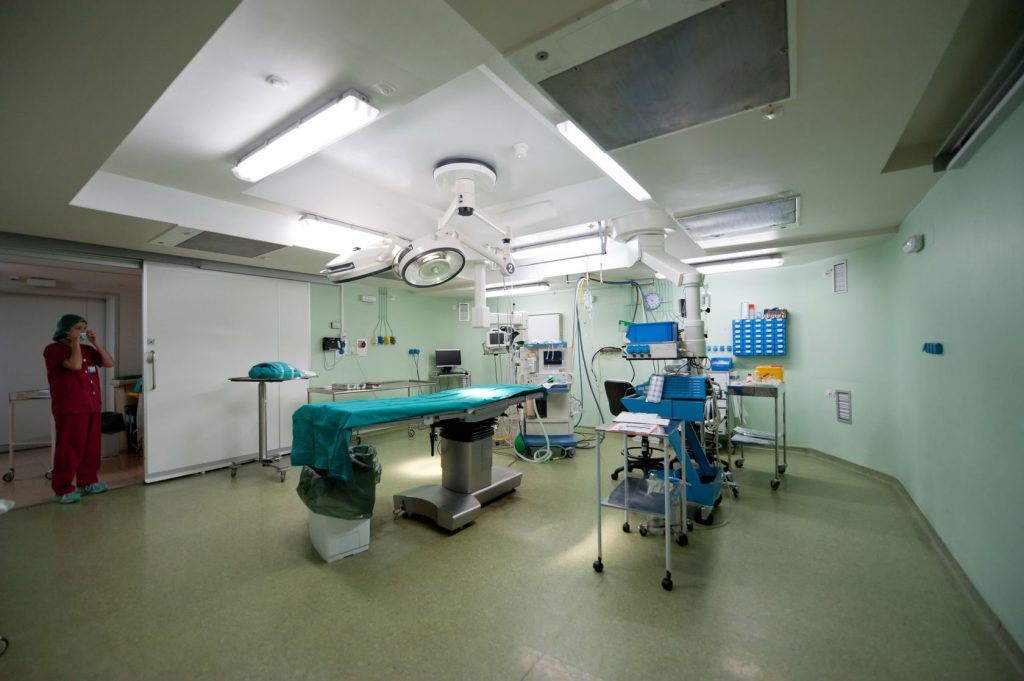NHS patients at risk if funding does not improve, new report warns
NHS patients could be facing longer waiting hours for surgeries and urgent care unless funding improves, the NHS Providers warned in a report. Staff issues are also weighing down on the healthcare system as it faces growing problems of recruitment and retention, further putting patients’ safety at risk.
It is likely that patient experience and patient safety will be at risk if NHS trusts are unable to deliver the 2017/18 requirements, the NHS Providers points out in a report that highlights the current emergencies that the system has to face.
The NHS has been dealing serious problems as it fights to deliver high quality healthcare to a growing number of patients. But as demand has increased, the system faces a combination of pay restraint, the impact of Brexit and the absence of a robust long term workforce strategy that are taking their toll.
This year, the budget announcement was of £2 billion for extra social care, £100 million capital for extra GP front door triage in A&E departments and £325 million capital for the most advanced sustainability and transformation footprints. And while these funds were welcomed by the NHS Providers, the report also states that they are insufficient to fix the underlying problems.
On the waiting list

According to the NHS Providers report, patients seeking and needing elective surgery will have to face longer waiting times. Not meeting the 18-week elective surgery standard means that more patients will have to wait for elective surgery and looking at forecasts and estimates, the NHS Providers says that at least 100,000 patients will face longer waiting periods than the 18-week standard.
Patients will have to live longer with their illness and in some cases, there is a risk of their condition worsening, requiring more complex, difficult and expensive treatment. In the extremes, longer waiting periods for elective surgeries could lead to conditions becoming permanent and not treatable.
And patients could face longer waiting hours when it comes to urgent and emergency care. The report suggests that maintaining the 95% four-hour A&E target, under the current circumstances, will be hard and it states that the standard will most probably deteriorate. Estimates show that 1,8 million patients will not be seen under the current time frame.
An increase in the A&E waiting hours can lead to overcrowding while patients’ safety risk will increase as their conditions could get significantly wars while waiting for treatment.
This year’s winter experience has shown that the four hour standard, coupled with failing to maintain and improve other indicators can drive NHS performance to new lows. The four-hour standard should be coupled with trolley waits, ambulance handover and bed occupancy.
There is widespread agreement from, among others, the Royal College of Emergency Medicine, the Society of Acute Medicine and the Royal College of Physicians that levels of NHS performance over the winter period were unacceptably low, risked patient safety, and need to be improved. This has been echoed by the secretary of state for health.
Over this winter, in some cases, there were systems that were overwhelmed by the rise in demand, well above the capacity level for sustained periods. Bed occupancy levels remained consistently high while intermediate out of hospital bed capacity has been declining by an estimated 8% over the last six years.
According to the Royal College of Emergency Medicine, if A&E performance gets below 75%, patient safety risk becomes seriously elevated on a systematic basis. Other measures of patient safety risk include persistent periods of 12-hour trolley waits, significant ambulance handover delays and bed occupancy rates over 85%. Throughout the three peak winter months general and acute bed occupancy did not drop below 89%, peaking at 96% in early February. This is in spite of additional capacity created by opening temporary beds.
The report has no estimation for how much it will cost to increase the current bed levels but it states that the NHS has to take into consideration how it can extend its own capacity. The government should consider more inpatient mental health beds in the right locations, more community beds, more home care capacity or more acute hospital beds. And the first systems to be taken into account are the ones where performance is at risk of dropping to unsafe levels.
Staffing problems

Patients are also at risk due to staffing problems. Trust leaders are now reporting that finding and keeping the right number of people with the right skills needed to deliver high quality care has become their biggest challenge.
“Workforce concerns are now the number one NHS priority”, says chief executive of NHS Providers, Chris Hopson.”Growing problems of recruitment and retention are making it harder for trusts to ensure patient safety. Unsustainable staffing gaps are quickly opening up in hospitals, mental health and community trusts and ambulance services.”
A 2016 staff survey revealed that while the overall staff engagement has increased, only 30% of employees agreed that “there are enough staff at this organisation for me to do my job properly”,
with 47% disagreeing. 59% of staff reported working unpaid overtime each week.
The document says that the demand for services is rising and patients’ needs are becoming more complex. The gap between the demand for and supply of suitably trained NHS staff is growing. Lacks in social care are often filled by the healthcare system, putting additional pressure on the staff, making more likely for the employees to suffer form burnout. And things are getting even worse as the impact of Brexit looms over EU employees and there are no certainties about the future.
The NHS Providers are asking state officials to consider patients’ safety and deliver funding which will allow care standards to improve. The government should be the first to recognize the value of the NHS as an organisation that provides employment, promotes research and ensures the UK life sciences sector is globally competitive.
There is also a need to better fund the social care systems, to remove pressure from the NHS and to create new and flexible mechanisms through which the social and the medical departments can work together and offer better care, closer to a patient’s home.
Also, there is a need for continued long term investment into increasing bed capacity and a particular attention should be given to mental health.